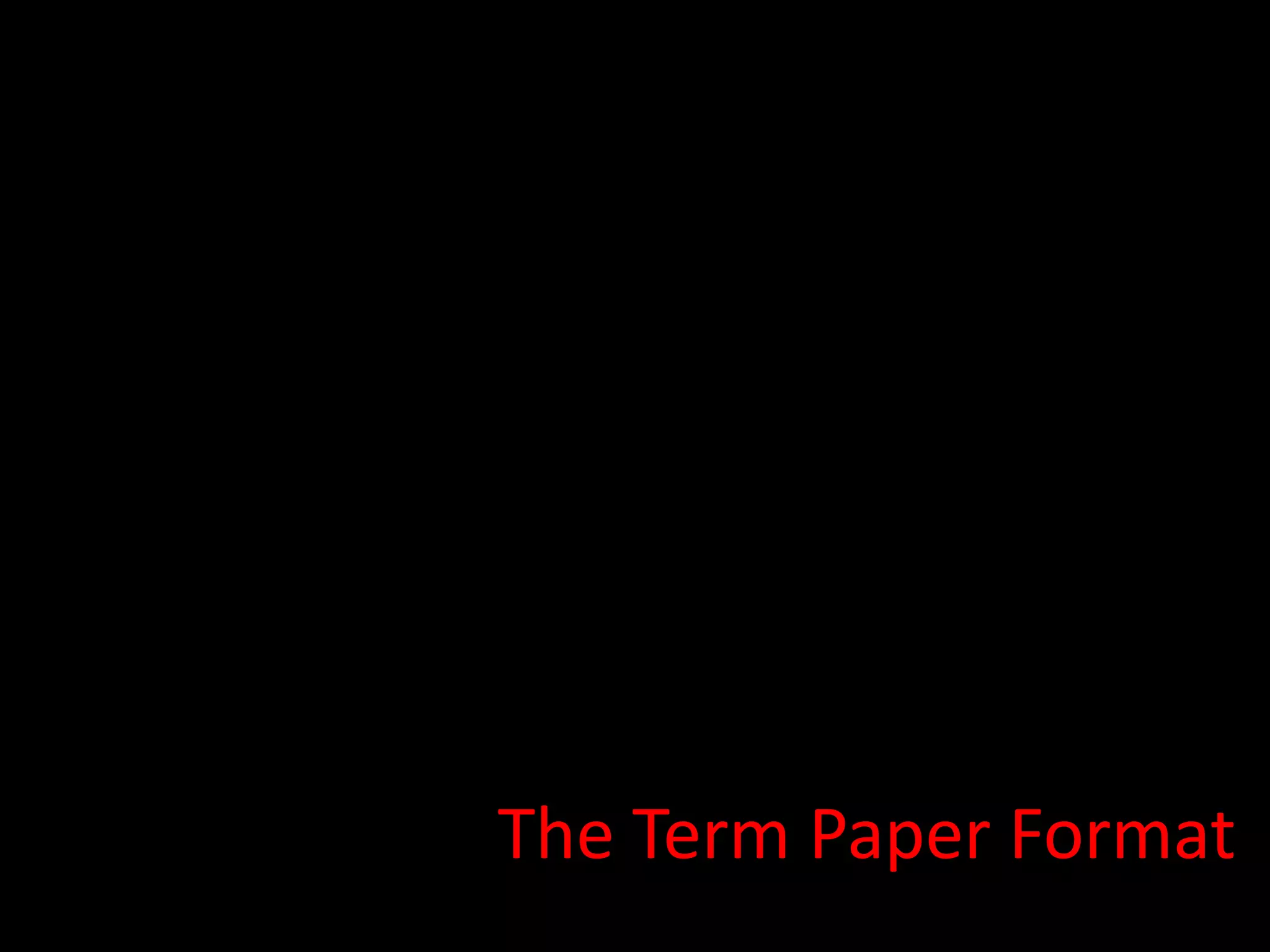1. The document provides guidelines for formatting a term paper, including formatting for the title page, table of contents, introduction, research methodology, findings, and conclusions sections.
2. Specific formatting guidelines are provided for font, margins, spacing, pagination, and paragraph justification for each section.
3. Examples are given of how to write the introduction, research methodology, and findings sections in accordance with the provided formatting guidelines.













